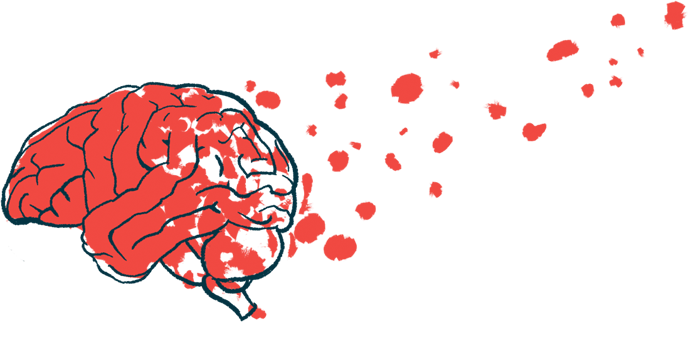Parkinson’s-linked LRRK2 Mutations Impact Iron Balance in Brain Cells
Written by |

Parkinson’s-related mutations in the LRRK2 gene, in the presence of pro-inflammatory stimuli, affect the uptake and trafficking of iron in brain cells, leading to its abnormal accumulation and “mislocalization.”
That’s according to a new study in mouse models and cells derived from Parkinson’s patients, which demonstrates “altered regulation of iron in Parkinson’s disease models based on the gene LRRK2,” Mark Cookson, PhD, the study’s senior author, of the National Institute on Aging, in Maryland, said in a press release.
“Previous data has shown that iron can be deposited in the brain, which we now link to a known genetic cause of Parkinson’s disease that may be relevant to novel treatments,” Cookson said.
“These results should help us understand the implications of blocking LRRK2 as a potential therapeutic for Parkinson’s disease,” Cookson added.
The study, “Mutations in LRRK2 linked to Parkinson disease sequester Rab8a to damaged lysosomes and regulate transferrin-mediated iron uptake in microglia,” was published in the journal PLOS Biology.
Iron is a micronutrient essential for several biological processes, and poorly regulated iron metabolism — which leads either to iron deficiency or overload — is associated with several diseases.
In the brain, the iron balance is even more delicate, given that neurons do not renew. With age, iron is known to accumulate in several brain regions and in microglia — the brain’s immune cells — and neuron-supporting cells called astrocytes, which are star-shaped.
Increased iron accumulation and inflammation in the brain also have been observed in several neurodegenerative disorders, including Parkinson’s and Alzheimer’s diseases, and is associated with cellular damage.
“Iron overload in the brain can activate glial cells and promote the release of inflammatory and neurotrophic factors that control iron [balance] in dopaminergic neurons,” the researchers wrote. Dopaminergic neurons are the main source of the neurotransmitter dopamine in the central nervous system, which comprises the brain and spinal cord.
The neurotrophic factors promote the development and survival of neurons and dopaminergic neurons are the type of nerve cells progressively lost in Parkinson’s patients.
Now, Cookson and colleagues in the U.S. and the U.K. provided evidence of a link between Parkinson’s-associated LRRK2 mutations and iron accumulation in the brain, particularly in microglia.
Mutations in the LRRK2 gene, which provides instructions for making an enzyme of the same name, account for about 5% of all cases of familial Parkinson’s, and about 1% of sporadic cases. These mutations typically lead to the overactivation of LRRK2’s kinase activity, which works by modifying other proteins so that they can fulfill their functions in the body.
LRRK2 is involved in several cellular processes such as vesicular trafficking, which comprises the movement of membrane-bound cellular vesicles and compartments. This is essential to move molecules around cells, as well as for their breakdown and recycling inside specialized cellular compartments called lysosomes.
In the current study, the researchers first looked at the effects of LRRK2 mutations in the function of Rab8a, one of LRRK2’s target proteins, which is known to control vesicular trafficking. One of Rab8a’s jobs is to regulate iron uptake via the transferrin receptor, located at the cell surface, and to help recycle that receptor back to the surface after it releases the iron.
Results from lab-grown human cells and mouse astrocytes carrying disease-causing LRRK2 mutations showed that Rab8a is abnormally “recruited to damaged lysosomes by mutant LRRK2 in a kinase-dependent manner,” the team wrote.
Rab8a’s mislocalization, preventing its binding to target molecules, resulted in transferrin receptor clustering inside the same damaged lysosomes where Rab8a and mutant LRRK2 were found.
Notably, that same mislocalization of Rab8a and transferrin receptors also was observed in pro-inflammatory stimuli-exposed microglia derived from Parkinson’s patients carrying the most common LRRK2 mutation, G2019S.
Previous studies “suggest a role of LRRK2 in microglial activation and an effect of [Parkinson’s-linked LRRK2 mutations] on [pro-inflammatory molecule] release and inflammation,” and pro-inflammatory stimuli “are known to induce uptake of extracellular iron by microglia,” the researchers wrote. Sustained microglia activation is a known contributor to the development and progression of Parkinson’s disease.
In addition, when mice carrying the G2019S mutation were exposed to a pro-inflammatory trigger, there was a marked increase in iron and ferritin buildup in microglia in the striatum, compared with healthy mice.
Ferritin is the major iron-storage protein in the cell, and the striatum is a region of the brain that controls movement and is one of the most affected brain regions in Parkinson’s.
“Our data suggest that a key step in the pathogenesis [underlying mechanisms] of LRRK2 Parkinson’s disease is the interaction of [LRRK2] with Rab8a and its subsequent effect on mislocalization of iron in activated microglia,” Cookson said.
However, “how this relates to the reported increase in iron in dopaminergic neurons, as relevant for [Parkinson’s disease development], remains unclear,” the researchers wrote.
“Dysregulation of iron storage or uptake by LRRK2 in microglia may in turn affect cytokine production and neuronal survival, as well as have a feedback effect on LRRK2 activity in the brain,” they hypothesized.
“Deciphering the protein trafficking pathways around LRRK2 will help us understand the mechanistic underpinnings of neurodegeneration and the biological implications of blocking LRRK2 kinase in the clinic, while highlighting signaling avenues that can be targeted as therapeutic means,” the team wrote.
The team also noted that a combination of iron-removing therapies with LRRK2 suppressors “could present a viable strategy” for treating Parkinson’s disease. Molecules targeting LRRK2 are already being developed as potential therapies for the disease.







